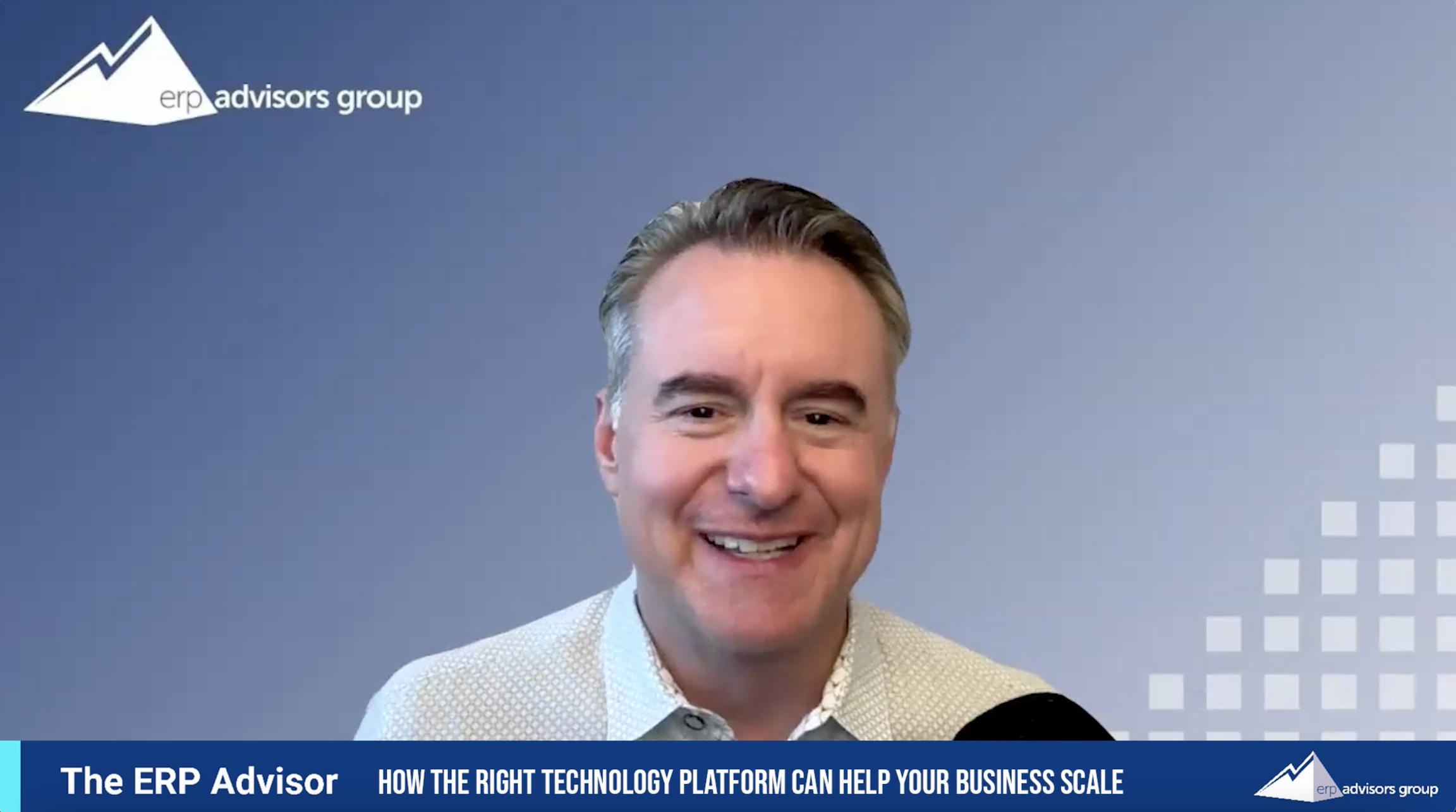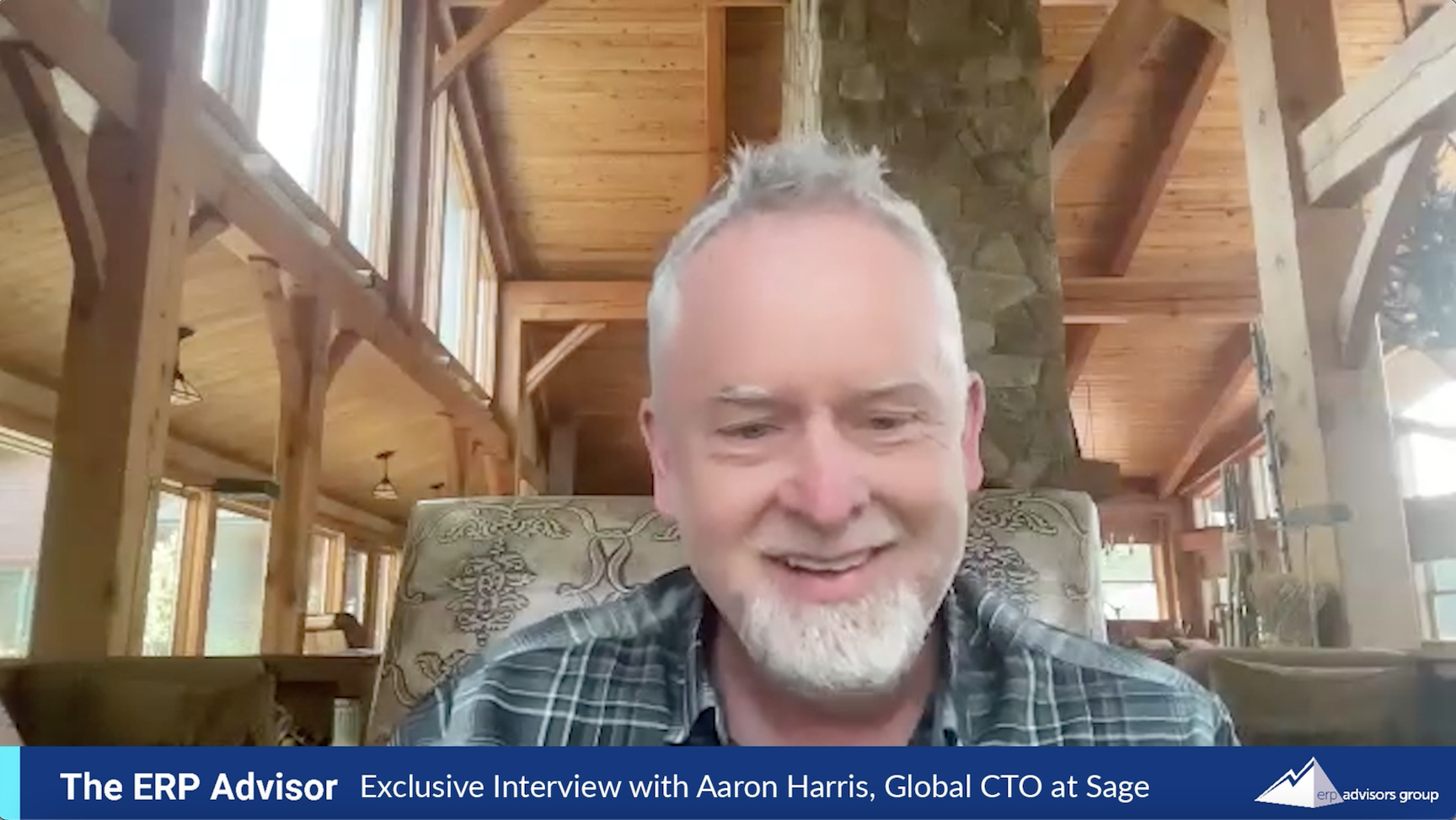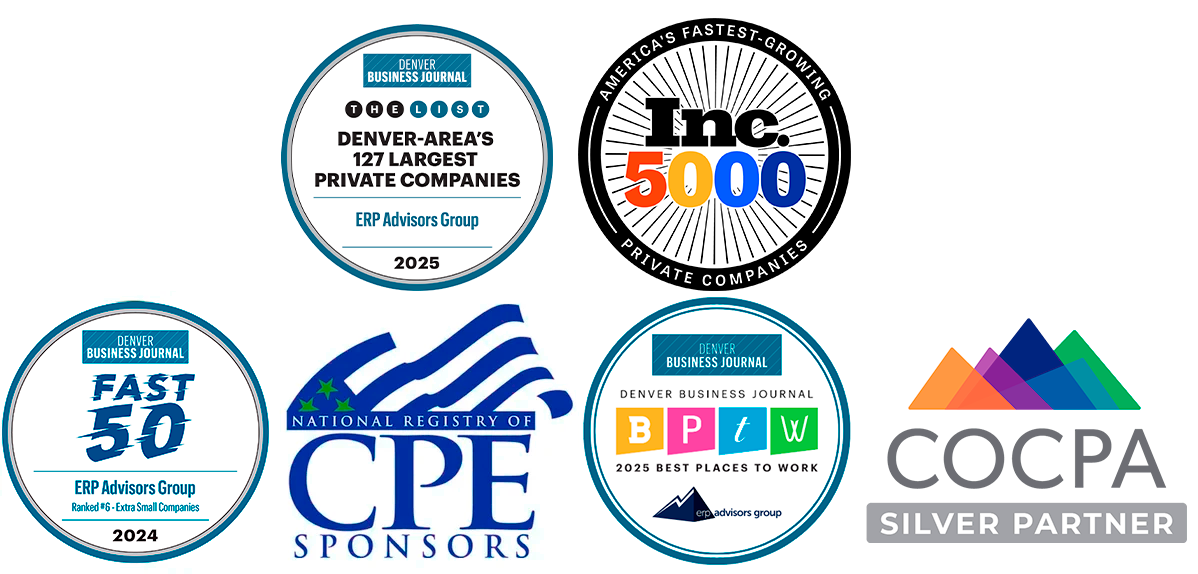
A food and beverage company juggles unique business requirements such as health and safety, regulatory compliance, food quality, and labeling which are complicated to implement. However, legacy applications usually fail to meet all these important needs for mid-sized companies. While the food industry giants tend to rely on a handful of Tier 1 ERPs, what is a mid-market food manufacturer or distributor supposed to do when they have outgrown their legacy software? In this episode of The ERP Advisor, Shawn Windle reviews ERP case studies for mid-sized food and beverage companies and the common success factors for migrating to new food and beverage ERPs.
Introduction
Most mid-sized food and beverage companies have over-customized legacy ERP systems to handle unique business processes. However, upgrading to the right ERP can not only accelerate and simplify these processes but also ensure their future success by modernizing how they do business. But how can these companies make the right selection and successfully implement a new ERP while juggling their unique business requirements? In this ERP implementation case study, our ERP experts review our own mid-sized food and beverage projects to evaluate the best practices that led them to a successful ERP implementation.
What is Unique About the Food & Beverage Industry?
Food and beverage companies are heavily regulated by the Food and Drug Administration, which complicates their requirements when it comes to evaluating software solutions. What these needs come down to is food safety, equating to complex lot traceability, labeling, and other specialized processes. Many food and beverage companies also operate within very niche industries that have even deeper requirements within a technology stack (or single software solution).
The most common example is these companies must have exact traceability so they can track the entire product lifecycle in detail. If a recall of products were to take place, they could easily track the product to identify where the problem occurred, how long ago it happened, how many contaminated products were distributed, and ultimately determine how to handle the recall. This is just one example of the unique situations managed by a food and beverage company’s ERP.
What Does a Typical Food & Beverage Legacy ERP Really Do?
Most legacy ERPs in the food and beverage industry are heavily customized to meet whatever functionality the business needs. However, it can be difficult to understand the inner workings of a customized ERP, and these systems usually rely on a single developer, which can put the business at risk. Legacy ERPs that are heavily customized typically cater to each department’s tiniest business requirements. However, this can be detrimental when companies believe they can upgrade to a system that will offer the same functionality as their customized installation. Additionally, many legacy solutions are micro-vertical specific, meaning the functionality runs deep and caters to their niche industry requirements. For these reasons, lots of these companies are hesitant to upgrade to the new age of ERP but may need to consider it if it is inhibiting future growth or putting the business at risk.
How Do Mid-Sized Food & Beverage Company ERP Selections Differ from Large Corporation Selections?
The biggest difference between large and mid-sized food and beverage companies’ ERP selections is the available options. Large food and beverage companies tend to rely on the major tier-one ERPs, such as SAP or Oracle, to deliver a vast scope of functionality. Adversely, mid-sized food and beverage companies still need specialized functionality, especially if they are operating within a specific industry, but often do not need as much as the ERP giants offer. Mid-sized food and beverage companies struggle with the decision of whether they should choose an industry-specific solution that caters to deep industry-specific requirements while sacrificing viability and market prevalence or go with a horizontal option that is less tailored to their expectations. This makes it difficult for midsized food and beverage companies to address their full set of requirements.
Case Study Client 1: International Seafood Distributor
This client was a seafood distributor that at the time was sub-one billion dollars in revenue and was looking to continue to serve their customers worldwide. As business boomed, the seafood distributor needed to change ERPs to meet their growing list of needs. The firm’s leadership foreshadowed the risks of staying on its legacy ERP and knew it was time to switch. As ownership passed to the younger generation, the business’s needs and requirements began to shift, resulting in new executives requesting more, like reporting, analytics, and visibility its legacy system couldn’t provide.
Additionally, this distributor had made hundreds, if not thousands, of customizations within its legacy ERP, and wanted similar customizations built into its new solution. Anytime a company customizes, it becomes more difficult to understand what is really going on within the system and how everything works. The ERP software customizations catered directly to their business. Users expected the tailored functionality they were accustomed to in the legacy system would be replicated in the new system immediately at go-live.
Ultimately, the greatest reason our food distributors switched was its legacy system no longer aligned with its needs and mission for the future. As they continued to grow, their needs evolved to the point where there was no other option than to upgrade.
The international seafood distributor selected a cross-industry ERP to meet their core financial requirements and was able to simultaneously select third-party bolt-ons to fill in industry-specific gaps. The ERP would serve their business well but because of their niche industry requirements, they needed additional applications to perform other essential business functions outside of their accounting system. They ended up utilizing third-party bolt-ons to manage lot traceability, logistics, sales transactions, and more to meet their unique needs without purchasing unnecessary functionality in a bigger-tiered ERP.
Case Study Client 2: National Consumer Goods Food Company
The greatest concern for this company was meeting its national business requirements while applying effective processes for raw materials tracking, batch manufacturing, packaging, distribution, shipping, and more. Since the company sells directly to grocers, it needed its new ERP to be able to track contracts and purchase orders that ensure all exchanges throughout the process occur at the agreed-upon price.
But despite a vast network of customers, the distributor’s existing ERP had little automation built into its processes. As a result, the consumer goods company would manually perform tasks and track information the same way, so their expectations for a new ERP were more realistic. They chose a gradient approach by selecting a system that would help them achieve incremental growth over the next few years while eliminating the tedious, manual processes that were holding them back.
The distributor’s new system helped automate its recipe management, batch manufacturing, packaging, units of measure, and more, to cut down on the time constraints they had been facing. Unlike the first case study, this company didn’t have a custom ERP that was built 20 years ago to replicate, which saved them time and money in avoiding customizations and over-the-top systems. When it comes to selecting a new ERP, there isn’t always a single right answer. Companies should instead focus on evaluating only the solutions that can meet their business requirements and using guidance from consulting experts to get a real feel for which one is right for you. This client will reach their goals by achieving minimum viable product (MVP) during phase one of their ERP implementation, going live with only the vital functionality, and optimizing the system from there. This ensures the process will be as smooth as possible.
Case Study Client 3: International Flavors & Ingredients Process Manufacturer
What differentiates fragrance manufacturers from others in the food and beverage industry is their large quantities of solutions and recipes requiring varying amounts of raw materials. For example, a fragrance company’s customer may only need one pint of a product to mix into its 400,000-gallon solution and then they need to be able to duplicate the recipe and repeat the mixing process over and over again. These complex batches need to be tracked in a system that allocates the ingredients in each solution and the exact measurements needed to create their different fragrances. This can be an extremely difficult process to track, repeat, and ultimately master.
The fragrance manufacturer also needed an ERP that could meet its business requirements on an international scale. The company not only had to abide by different government regulations, but also conduct business in different countries’ languages, different units of measurement, and other cultural barriers. Regulations and processes vary country by country, and an international company’s system must accommodate these needs no matter where they are conducting business.
The solution for this process manufacturer was to incorporate specialized solutions into a best-of-breed ERP. With new solutions like labeling systems, the fragrance company could not only consolidate all their data from multiple locations but could also go from the product’s inception to shipment within a single solution. This not only accelerated business processes but also provided staff with greater access to their data from around the world. The biggest problem this business faced during its ERP implementation was its data. With so much data dispersed among disparate systems, more was needed to cleanse and validate the data than a run-of-the-mill data migration. Our data migration specialists were able to come in early and assist the process manufacturer through their data journey.
Conclusion
Mid-sized food and beverage companies juggle a unique set of industry requirements when implementing a new ERP. To avoid unforeseen roadblocks, food and beverage companies should begin cleaning their data as early as possible and consult with industry experts to analyze and evaluate their requirements. Regardless of the problems your business may be facing, real help is available. Find out if now is the right time to upgrade to a new food and beverage ERP by scheduling a free consultation with our team of expert ERP consultants.





